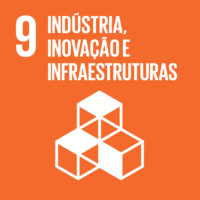Ciência_Iscte
Publicações
Descrição Detalhada da Publicação
Título Revista
IEEE Access
Ano (publicação definitiva)
2023
Língua
Inglês
País
Estados Unidos da América
Mais Informação
Web of Science®
Scopus
Google Scholar
Esta publicação não está indexada no Overton
Abstract/Resumo
Adding human cognitive skills to planetary exploration through remote teleoperation can
lead to more effective and valuable scientific data acquisition. Still, even small amounts of latency can significantly affect real-time operations, often leading to compromised robot safety, goal overshoot, and high levels of human mental fatigue and cognitive workload. Thus, novel operational strategies are necessary to cope with these effects. This paper proposes three augmented teleoperation interfaces that allow the user to operate a robot subject to 3 seconds of latency: (1) Avatar-Aided Interface (AAI), a semi-autonomous approach based on a virtual element; (2) Predictive Interface (PI), an approach with direct control and predictive elements; and (3) Hybrid Interface (HI), where the operator can easily switch between PI and AAI. We conducted a systematic within-subject experiment to evaluate the proposed interfaces in a realistic virtual environment with frequent traction losses. The user study compared AAI and PI to a Control Interface (CI), which did not display any augmented elements. The main results of this comparison showed that: (1) AAI led to a significant reduction in workload and a significant increase in usability and robot safety; (2) the use of the PI caused a significant increase in path length, indicating that operators overshoot their goals more often with this approach; (3) PI and AAI had lower reported effort; and (4) AAI is more flexible and effortless than PI and CI. Finally, the presented results show the need to consider uncertainty (e.g., traction loss) in future interface design.
Agradecimentos/Acknowledgements
--
Palavras-chave
Time-delayed teleoperation,Augmented interfaces,Predictive displays,Semi-autonomous navigation,Traction losses,Planetary exploration
Classificação Fields of Science and Technology
- Ciências da Computação e da Informação - Ciências Naturais
- Engenharia Eletrotécnica, Eletrónica e Informática - Engenharia e Tecnologia
Registos de financiamentos
| Referência de financiamento | Entidade Financiadora |
|---|---|
| UIDB/50009/2020 | Fundação para a Ciência e a Tecnologia |
| UIDB/04466/2020 | Fundação para a Ciência e a Tecnologia |
| UIDP/04466/2020 | Fundação para a Ciência e a Tecnologia |
Projetos Relacionados
Esta publicação é um output do(s) seguinte(s) projeto(s):
Contribuições para os Objetivos do Desenvolvimento Sustentável das Nações Unidas
Com o objetivo de aumentar a investigação direcionada para o cumprimento dos Objetivos do Desenvolvimento Sustentável para 2030 das Nações Unidas, é disponibilizada no Ciência_Iscte a possibilidade de associação, quando aplicável, dos artigos científicos aos Objetivos do Desenvolvimento Sustentável. Estes são os Objetivos do Desenvolvimento Sustentável identificados pelo(s) autor(es) para esta publicação. Para uma informação detalhada dos Objetivos do Desenvolvimento Sustentável, clique aqui.

 English
English


